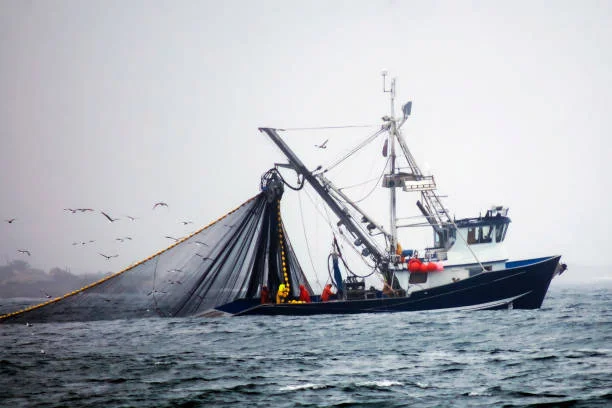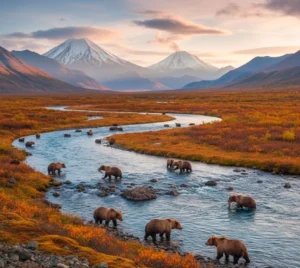The state of Alaska has long been synonymous with its thriving fishing industry, a cornerstone of its economy and cultural heritage. From the icy waters of the Bering Sea to the Gulf of Alaska, fishing serves as both a vital economic driver and a way of life for many Alaskans. The industry is multifaceted, encompassing commercial, subsistence, and sport fishing, which together sustain thousands of jobs, contribute billions to the economy, and play a crucial role in maintaining Alaska’s food security.
Alaska’s seafood industry is responsible for over 60% of the nation’s commercial fisheries production, with the state’s seafood exports valued at approximately $3.4 billion in 2022. Employment in this sector is robust, directly supporting an estimated 99,000 jobs and generating more than $5 billion in annual economic output. This economic lifeline touches every community across the state, linking rural and urban areas through shared resources and opportunities.
Overview of Alaska’s Fishing Industry
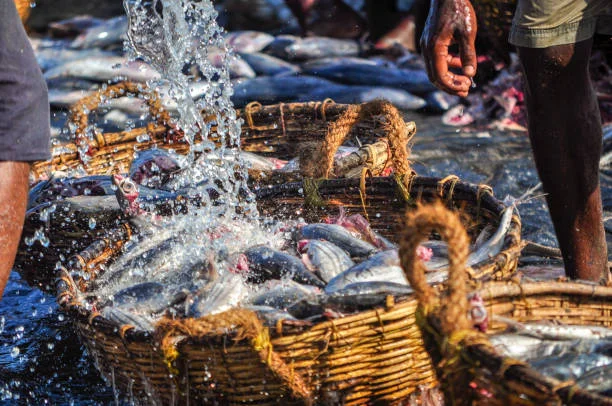
The fishing industry is a vast and dynamic system, consisting primarily of commercial, sport, and subsistence sectors. Alaska fishing industry statistics show that the Alaska seafood industry has experienced a significant downturn in recent years, with a staggering $1.8 billion loss estimated between 2022 and 2023. This decline has led to a 50% drop in profitability compared to the previous two years.
The repercussions of this economic downturn extend far beyond Alaska’s borders. The entire U.S. seafood sector has been impacted, resulting in over 38,000 job losses nationwide and a total economic loss of $4.3 billion. Additionally, states heavily reliant on the fishing industry, such as Alaska, Washington, Oregon, and California, have collectively lost $191 million in state and local tax revenue.
Robert Foy, director of the Alaska Fisheries Science Center, emphasized the vital role of the Alaska seafood industry in the U.S. seafood sector. He highlighted the far-reaching consequences of these losses, which have rippled through the entire supply chain.
Commercial fishing remains the dominant force, with key species such as salmon, pollock, halibut, crab, and cod making up the bulk of catches. In 2022 alone, the total commercial harvest of all seafood reached over 5.6 billion pounds, underscoring the industry’s global significance.
Meanwhile, subsistence fishing remains essential for Indigenous and rural communities, providing food security and cultural continuity. The sport fishing sector also attracts anglers from around the world, bringing in millions of dollars in tourism revenues each year.
Importance of the Fishing Industry in Alaska’s Economy
Fishing is the lifeblood of Alaska’s economy, contributing substantially to state revenues, employment, and exports. In many coastal towns, fish processing plants serve as the largest employers, directly affecting local economic stability.
Revenues from commercial fishing provide essential tax revenue that supports public services, infrastructure, and educational programs.
Moreover, fishing fuels ancillary industries such as transportation, equipment manufacturing, and tourism, creating a broad economic ripple effect. Studies reveal that, collectively, Alaska’s seafood industry contributes $5.7 billion annually in labor income and output, underscoring its critical role in sustaining state prosperity.
Fishing in Alaska Through the Ages
Alaska’s fishing industry has a rich history dating back thousands of years, with Indigenous communities relying on the bountiful marine resources for sustenance, trade, and cultural traditions.
Archaeological evidence indicates that Alaska Natives developed sophisticated techniques to harvest and preserve fish, creating sustainable practices long before commercial exploitation began. In the 20th century, commercial fishing experienced transformative growth, spurred by industrial advancements and rising global demand.
Over time, the establishment of federal and state regulations, such as the Magnuson-Stevens Fishery Conservation and Management Act, helped ensure sustainable fisheries management and resource conservation. Today, Alaska remains committed to balancing economic growth with sustainability, preserving its fisheries for generations to come while honoring centuries-old traditions.
Economic Contributions of Alaska’s Fishing Industry
| Employment Category | Number of Jobs (in millions) |
| Fishers | 33.6 |
| Aquaculture Workers | 22.1 |
| Seafood Processing Workers | 20.3 |
| Support Staff (Logistics/Suppliers) | 10-15 |
| Total Estimated Employment | 96-101 million |
1- Employment Generation
The fishing industry in Alaska is a major engine for job creation, providing direct and indirect employment opportunities that fuel the state’s economy and sustain entire communities.
– Direct Jobs: Fishermen, Processors, and Support Staff
Direct employment within the fishing industry encompasses a wide range of roles that are vital to its success. Fishermen, including both captains and crew, work tirelessly to harvest millions of pounds of seafood each year.
Processing plant workers handle, clean, package, and ship the catch to markets worldwide, often operating in seasonal bursts that require high numbers of dedicated staff. Support personnel, such as quality control specialists, dockworkers, and maintenance crews, also play crucial roles in ensuring the smooth operation of this industry.
In total, it is estimated that around 60,000 direct jobs are supported by Alaska’s commercial fishing sector, with these roles often providing wages well above national averages and vital employment for rural and coastal areas.
– Indirect Jobs: Equipment Suppliers, Transportation, and Logistics
Beyond the direct jobs, the fishing industry generates substantial indirect employment, extending its economic influence well beyond the docks and processing facilities. This includes businesses that supply specialized fishing gear, boat parts, and other equipment essential for safe and efficient operations.
Transportation and logistics companies are also key players, moving millions of pounds of seafood from Alaska’s shores to global markets, often relying on skilled labor for packaging, warehousing, and freight management.
Additionally, industries such as cold storage facilities, shipbuilding, fuel supply, and marketing further benefit from and support the fishing sector. Collectively, these indirect roles not only amplify the industry’s economic impact but also create a robust network of ancillary services, contributing to the employment and financial health of numerous communities throughout Alaska.
2- Revenue Generation and State Taxation
Alaska’s fish industry is a major contributor to state revenues, generating significant funds through taxes, licenses, and economic output. The sector’s impact on state finances includes a variety of sources and economic benefits:
- Contribution to State Taxes and Licenses: Fishing operations, including permits, processing, and landing taxes, generate millions annually for the state. Revenue from licenses for commercial fishermen, processors, and related businesses contributes directly to state budgets, funding public services, education, and infrastructure.
- Impact on Alaska’s GDP: The industry plays a critical role in Alaska’s economy, contributing approximately $5 billion annually. Fishing-related activities bolster the state’s GDP, supporting growth in regional economies, particularly in coastal and rural communities, and enhancing overall state productivity through direct and ancillary business engagements.
3- Exports and Trade
AK fishing industry plays a crucial role in the state’s export economy, providing high-quality seafood products to markets worldwide. The vast majority of the seafood harvested in Alaska is exported, contributing significantly to the state’s economic health and global trade presence.
– Alaska’s Key Export Markets
Alaska exports a diverse range of seafood products, with key markets including Japan, China, South Korea, the European Union, and the United States.
Products such as salmon, pollock, crab, and cod are highly sought after, making Alaska a leading global supplier. In recent years, exports to Asia have grown steadily, with China serving as a major destination for processed and unprocessed seafood.
The value of Alaska’s seafood exports reached around $3.4 billion in 2022, illustrating its critical role in the state’s trade economy.
– Trade Agreements Impacting the Fishing Sector
The success of Alaska’s seafood exports is influenced by numerous trade agreements and regulations. Agreements such as the U.S.-Japan Trade Agreement and other bilateral and multilateral deals impact tariffs, quotas, and market access for Alaskan seafood.
Regulations like the Marine Stewardship Council (MSC) certification ensure sustainable fishing practices, boosting the industry’s marketability abroad.
Trade tensions, tariff policies, and international regulatory changes can directly affect export dynamics, highlighting the importance of a stable trade environment for Alaska’s fishing sector to remain competitive globally.
Key Sectors within Alaska’s Fishing Industry
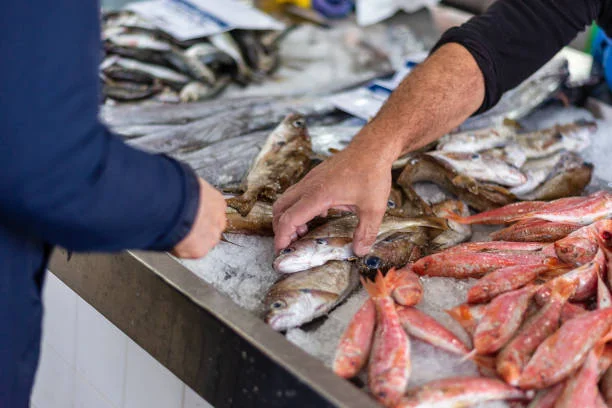
Alaska’s industry is a dynamic and multifaceted sector, with various key areas contributing to its overall economic impact and cultural significance. Each segment plays a critical role in the industry’s success and sustains the livelihoods of countless Alaskans.
1- Commercial Fishing
Commercial fishing serves as the backbone of Alaska’s seafood industry, providing a diverse array of seafood products that are in high demand across the globe. The sector includes several key sub-industries, each with unique characteristics, challenges, and contributions to the state’s economy.
- Salmon Fishing: Alaska is known for its abundant and sustainable salmon fisheries, which include species like king (chinook), sockeye, coho, pink, and chum salmon. The commercial salmon harvest is an iconic part of Alaska’s economy and cultural identity. In 2022, commercial salmon harvests reached over 200 million fish, generating significant revenues and providing employment for thousands of fishermen, processors, and related workers.
- Crab and Shellfish Industry: The state’s crab fisheries, including king crab, snow crab, and Dungeness crab, are renowned for their premium quality. Shellfish harvesting is highly regulated to maintain sustainable populations, ensuring long-term viability and profitability. The crab and shellfish industry contributes significantly to Alaska’s export revenues and is especially critical for coastal communities reliant on fishing income.
- Groundfish and Other Major Fisheries: Groundfish species, such as pollock, Pacific cod, sablefish, and various rockfish, make up the bulk of Alaska’s total seafood harvest by weight. The pollock fishery, in particular, is the largest volume fishery in the United States and a major global supplier. These fisheries are carefully managed to ensure long-term sustainability, adhering to strict quotas and conservation practices that preserve the health of marine ecosystems while maximizing economic output.
2- Subsistence Fishing
Subsistence fishing is a vital aspect of life for many Alaskans, particularly Indigenous and rural communities, who depend on it for both food security and cultural continuity. Practiced for thousands of years, it holds profound significance, sustaining customs, ceremonies, and values passed down through generations.
Species such as salmon, halibut, and herring are central to traditional diets, with seasonal harvests bringing families and communities together to strengthen social bonds and preserve Indigenous knowledge.
Economically, subsistence fishing reduces household expenditures and enhances food security, especially in remote areas with limited access to affordable store-bought goods. It also supports local economies through bartering and sharing, fostering self-sufficiency, resilience, and community cohesion across rural Alaska.
Commercial Fishing Catch by Species:
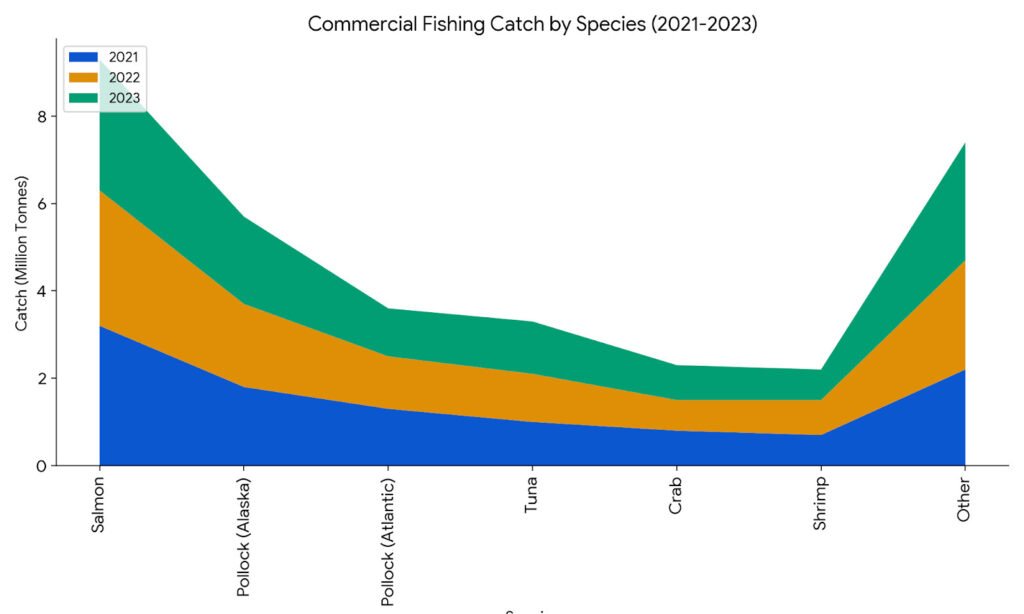
3- Sport Fishing and Tourism
Sport fishing in Alaska is a significant driver of tourism, attracting anglers from around the globe who seek world-class fishing experiences amid breathtaking natural landscapes. The economic impact of sport fishing is substantial, contributing millions of dollars to the state’s economy annually. This sector supports local businesses such as guided fishing tours, lodges, tackle shops, and restaurants, creating jobs and generating revenue for communities.
- Economic Impact of Sport Fishing Tours: Guided fishing tours and charters provide income for local operators, captains, and support staff, injecting money directly into the economy. In 2022, sport fishing in Alaska generated an estimated $750 million in economic activity, supporting over 15,000 jobs.
- Contribution of Recreational Fishing to Tourism: Recreational fishing attracts thousands of tourists annually, who often extend their stays to explore other attractions, further benefiting the hospitality and transportation sectors. The demand for permits, fishing licenses, and equipment rentals adds to state revenues, emphasizing the broader economic influence of sport fishing on Alaska’s tourism industry.
Impact of Climate Change on Fish Populations
Climate change has profound and far-reaching impacts on fish populations, threatening the stability of ecosystems and economies dependent on fisheries. Rising ocean temperatures and changing sea ice conditions disrupt the distribution and migration patterns of many fish species in Alaska, altering the timing of key life events such as spawning.
Species like salmon are particularly sensitive to temperature changes, which can affect their growth, survival rates, and availability. Additionally, ocean acidification, caused by the increased absorption of carbon dioxide, negatively impacts shellfish and other marine organisms that rely on calcium carbonate to form their shells, threatening the entire marine food chain.
Changes in prey availability and competition further strain fish populations, complicating the efforts of the fishing industry to maintain sustainable harvests. The combined effects of climate change not only challenge the health of fish populations but also put coastal communities, traditional practices, and the broader fishing economy at risk.





